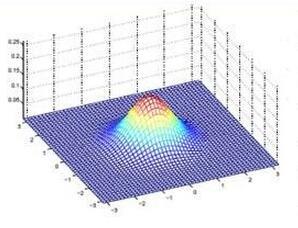Human affects are complex paradox and an active research domain in affective computing. Affects are traditionally determined through a self-report based psychometric questionnaire or through facial expression recognition. However, few state-of-the-arts pieces of research have shown the possibilities of recognizing human affects from psychophysiological and neurological signals. In this article, electroencephalogram (EEG) signals are used to recognize human affects. The electroencephalogram (EEG) of 100 participants are collected where they are given to watch one-minute video stimuli to induce different affective states. The videos with emotional tags have a variety range of affects including happy, sad, disgust, and peaceful. The experimental stimuli are collected and analyzed intensively. The interrelationship between the EEG signal frequencies and the ratings given by the participants are taken into consideration for classifying affective states. Advanced feature extraction techniques are applied along with the statistical features to prepare a fused feature vector of affective state recognition. Factor analysis methods are also applied to select discriminative features. Finally, several popular supervised machine learning classifier is applied to recognize different affective states from the discriminative feature vector. Based on the experiment, the designed random forest classifier produces 89.06% accuracy in classifying four basic affective states.
翻译:人类影响是复杂的悖论,是影响计算中积极的研究领域。影响传统上通过自我报告的基于心理测量的问卷或通过面部表情识别来确定。然而,很少有最先进的研究显示有可能认识到心理生理和神经信号对人类的影响。在本篇文章中,电子脑图信号被用来识别人类的影响。100名参与者的电子脑图(EEEG)用来观看一分钟视频刺激,以诱导不同的感动状态。带有情感标签的视频有各种各样的影响,包括快乐、悲伤、厌恶与和平。实验性刺激是收集并深入分析的。EEEG信号频率和参与者的评级之间的相互关系被考虑用于对影响状态进行分类。在统计特征的同时,还采用高级特征提取技术来制作感动状态识别的集成特征矢量。还采用分分析方法来选择有区别的特征。最后,一些流行的受监督的机器分类方法被用于识别从受歧视性特性设计的四级的精确度中的不同感应状态。 5 5 5 5 5 5 5 5 5 5 5 5 5 5 5 5 5 5 5 5 5 5 5 5 5 5 5 5 5 4 5 5 5 5 5 5 5 5 5 5 5 5 5 5 5 5 5 5 5 5 5 5 5 5 5 5 5 5 5 5 5 5 5 5 5 5 5 5 5 5 5 5 5 5 5 5 5 5 5 5 5 5 5 5 5 5 5 5 5 5 5 5 5 5 5 5 5 5 5 5 5 5 5 5 5 5 5 5 5 5 5 5 5 5 5 5 5 5 5 5 5 5 5 5 5 5 5 5 5 5 5 5 5 5 5 5 5 5 5 5 5 5 5 5 5 5 5 5 5 5 5 5 5 5



